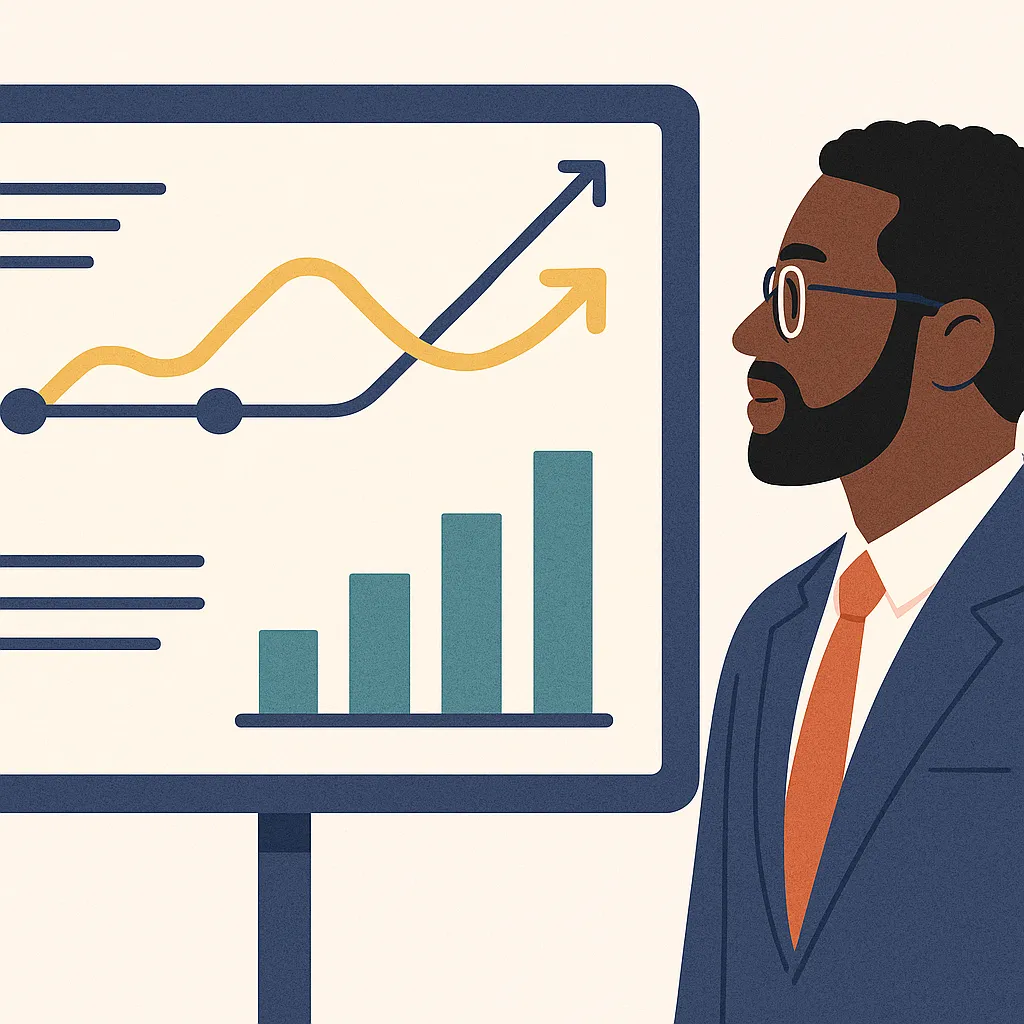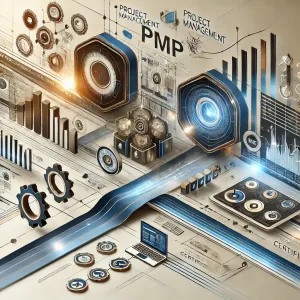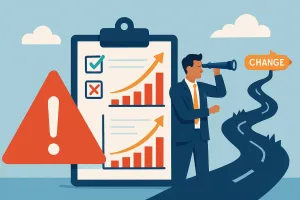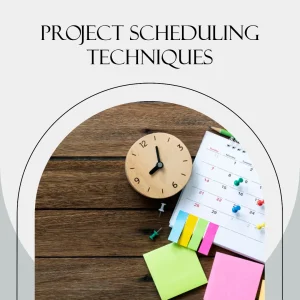Introduction
The effective management of vendors is crucial for ensuring project success. A vendor management framework serves as a structured approach to managing relationships with external suppliers, encompassing various processes such as vendor selection, contract negotiation, performance monitoring, and risk management. This framework not only helps organizations streamline their procurement processes but also mitigates risks associated with vendor relationships, ultimately contributing to the overall success of projects.
The significance of effective vendor management cannot be overstated. As businesses increasingly rely on external vendors for critical functions, the ability to manage these relationships effectively becomes a key determinant of project outcomes. A well-defined vendor management framework enables project managers to align vendor capabilities with project requirements, ensuring that deliverables meet quality standards and are delivered on time. Furthermore, it fosters strong partnerships that can lead to enhanced collaboration, innovation, and cost savings, thereby boosting the return on investment (ROI) for projects.
As we look towards the future, several emerging trends are poised to reshape vendor management frameworks in the coming decade. These trends include the integration of advanced technologies such as artificial intelligence and automation, the rise of direct sourcing strategies, and an increased focus on compliance and risk management. Understanding these trends is essential for project management professionals and business leaders who aim to stay ahead in a rapidly evolving landscape. By adapting to these changes, organizations can enhance their vendor management practices, ensuring they are well-equipped to navigate the complexities of modern project environments.
Current Landscape of Vendor Management
Vendor management frameworks play a crucial role in ensuring that organizations effectively collaborate with external suppliers. As we look towards the future, it is essential to assess the existing state of these frameworks and identify areas for improvement.
Traditional Vendor Management Practices
Historically, vendor management has relied on a set of traditional practices that include:
- Contract Negotiation: Organizations typically engage in extensive negotiations to establish contracts that outline the terms of service, pricing, and deliverables. This process often involves legal teams and can be time-consuming.
- Performance Monitoring: Regular assessments of vendor performance against agreed-upon metrics have been a staple of vendor management. This includes tracking service levels, quality of deliverables, and compliance with contractual obligations.
- Relationship Management: Building and maintaining relationships with vendors has been a focus, with organizations often relying on personal connections and informal communication to manage these partnerships.
While these practices have served businesses well in the past, they are increasingly being challenged by the evolving landscape of vendor management.
Common Challenges Faced by Businesses
Organizations today encounter several challenges in their vendor management efforts, including:
- Complexity of Vendor Ecosystems: As businesses expand their operations, they often engage with multiple vendors across various functions. This complexity can lead to difficulties in oversight and coordination, making it challenging to manage relationships effectively [11].
- Economic Uncertainty: The current economic climate has heightened the need for organizations to extract greater value from their vendor relationships while simultaneously reducing risks. This pressure can strain existing frameworks that may not be equipped to handle such demands [11].
- Technological Advancements: The rapid pace of technological change has outstripped many traditional vendor management practices. Organizations may struggle to integrate new technologies and tools that can enhance vendor oversight and performance tracking [12].
Limitations of Current Frameworks
Current vendor management frameworks often fall short in addressing the modern business needs due to several limitations:
- Inflexibility: Many existing frameworks are rigid and do not allow for the agility required in today’s fast-paced business environment. This inflexibility can hinder organizations from adapting to changes in vendor performance or market conditions [10].
- Lack of Integration with Technology: With over 400 vendor management systems available, many organizations still rely on outdated methods that do not leverage the full potential of technology. This gap can lead to inefficiencies and missed opportunities for real-time data analysis and decision-making [12].
- Insufficient Risk Management: As the vendor management landscape evolves, the need for robust risk management frameworks becomes increasingly critical. Current practices may not adequately identify, assess, and mitigate potential risks associated with vendor relationships [6].
Trend 1: Increased Automation and Technology Integration
As we look towards the future of vendor management frameworks, one of the most significant trends is the increased automation and integration of technology. This transformation is poised to reshape how organizations manage their vendor relationships, enhancing efficiency and effectiveness in several key areas.
Rise of AI and Machine Learning in Vendor Selection and Performance Evaluation
Artificial intelligence (AI) and machine learning are becoming integral to the vendor management process. These technologies enable organizations to analyze vast amounts of data to identify the best vendors based on performance metrics, historical data, and predictive analytics. By automating the vendor selection process, businesses can reduce the time and resources spent on manual evaluations, leading to more informed decision-making. Furthermore, AI can continuously monitor vendor performance, providing real-time insights that help organizations maintain high standards and quickly address any issues that arise. This shift towards data-driven decision-making is expected to enhance vendor relationships and drive better outcomes for projects [1][11].
Role of Cloud-Based Solutions in Streamlining Communication and Data Management
Cloud-based solutions are revolutionizing how organizations manage vendor relationships by facilitating seamless communication and data management. These platforms allow for centralized access to vendor information, contracts, and performance data, making it easier for project management professionals to collaborate with vendors and internal teams. The ability to share documents and updates in real-time enhances transparency and accountability, which are crucial for successful vendor management. Additionally, cloud solutions often come equipped with automation features that can streamline processes such as invoicing and payment tracking, further reducing administrative burdens and improving operational efficiency [2][12].
Impact of Technology on Compliance and Risk Management
The integration of advanced technologies into vendor management frameworks also significantly impacts compliance and risk management. Automation tools can help organizations ensure that vendors adhere to regulatory requirements and internal policies by automating compliance checks and audits. This not only reduces the risk of non-compliance but also allows project managers to focus on strategic initiatives rather than getting bogged down in manual compliance processes. Moreover, technology can enhance risk management by providing predictive analytics that identify potential risks associated with vendor relationships, enabling organizations to proactively address issues before they escalate [3][10].
Trend 2: Greater Focus on Sustainability and Ethical Practices
The emphasis on sustainability and ethical practices in vendor management is becoming increasingly significant. This trend is not just a response to regulatory pressures but also a reflection of changing consumer preferences and corporate values. Here are the key points that illustrate this shift:
- Demand for Sustainable Sourcing: Organizations are increasingly prioritizing sustainable sourcing as part of their vendor management frameworks. This involves selecting vendors who demonstrate a commitment to environmentally friendly practices, ethical labor standards, and social responsibility. Companies are recognizing that their supply chains can significantly impact their overall sustainability goals, leading to a more rigorous evaluation of vendor practices [1][10].
- Incorporation of ESG Criteria: The integration of Environmental, Social, and Governance (ESG) criteria into vendor assessments is becoming a standard practice. Businesses are aligning their vendor risk management (VRM) processes with ESG principles to ensure that their vendors not only meet compliance requirements but also reflect the organization’s values. This shift is indicative of a broader trend towards sustainability and ethical business practices, influencing how companies assess and manage vendor risks [2][12].
- Shifting Consumer Preferences: As consumers become more conscious of the brands they support, there is a notable shift towards ethical brands. This change in consumer behavior is prompting companies to adopt more transparent and responsible vendor management practices. Organizations are aware that aligning with ethical vendors can enhance their brand reputation and customer loyalty, making it a strategic imperative in vendor selection [3][10].
- Implications for Vendor Relationships: The focus on sustainability and ethics is reshaping vendor relationships. Companies are fostering collaboration and transparency with their vendors to ensure compliance with sustainability standards. This approach not only strengthens trust but also encourages vendors to adopt greener and more socially responsible practices, ultimately benefiting both parties [4][13].
Trend 3: Enhanced Collaboration and Relationship Management
The focus on vendor management is shifting from mere transactional interactions to fostering collaborative relationships. This trend is crucial for project management professionals and business leaders who aim to leverage vendor partnerships for long-term success. Here are some key points to consider:
Importance of Building Long-Term Partnerships
- Strategic Alignment: Establishing long-term partnerships with vendors allows organizations to align their strategic goals with those of their vendors. This alignment fosters a shared vision, which can lead to more innovative solutions and improved project outcomes. As businesses increasingly rely on external vendors for critical functions, nurturing these relationships can provide a competitive edge in the market [2][4].
- Risk Mitigation: Long-term partnerships can help mitigate risks associated with vendor management. By developing trust and understanding over time, organizations can better navigate challenges and uncertainties that may arise during project execution. This is particularly important in an environment where economic pressures and regulatory demands are on the rise [4][6].
Strategies for Fostering Collaboration and Transparency
- Open Communication: Establishing clear and open lines of communication is essential for fostering collaboration. Regular check-ins, feedback loops, and transparent reporting can help both parties stay aligned and address any issues promptly. This approach not only enhances trust but also encourages a culture of continuous improvement [3][5].
- Joint Problem-Solving: Engaging vendors in joint problem-solving initiatives can strengthen relationships. By involving vendors in decision-making processes and brainstorming sessions, organizations can tap into their expertise and insights, leading to more effective solutions and a sense of shared ownership over project outcomes [3][6].
- Performance Metrics and Accountability: Implementing performance metrics that reflect collaborative goals can enhance accountability. By measuring success based on shared objectives, both organizations and vendors can work together towards achieving common targets, thereby reinforcing their partnership [5][9].
Case Studies of Successful Vendor Partnerships
- Tech Industry Example: A leading technology firm partnered with a software vendor to co-develop a new product. By fostering a collaborative environment where both teams shared insights and resources, they were able to bring the product to market faster and with greater innovation than if they had worked independently. This partnership not only resulted in a successful product launch but also established a long-term relationship that benefited both parties in subsequent projects [3][6].
- Manufacturing Sector: A manufacturing company implemented a vendor management framework that emphasized collaboration. By involving vendors in the early stages of product development, they were able to leverage vendor expertise in materials and processes, leading to cost savings and improved product quality. This collaborative approach transformed their vendor relationships from transactional to strategic, resulting in enhanced performance and mutual growth [4][5].
Trend 4: Data-Driven Decision Making
The integration of data analytics is becoming increasingly vital. As organizations strive for efficiency and effectiveness, leveraging big data to monitor vendor performance and assess risks is emerging as a key trend that will shape vendor management frameworks in the coming decade.
The Role of Big Data in Monitoring Vendor Performance and Risk Assessment
Big data plays a crucial role in enhancing vendor management by providing organizations with the ability to analyze vast amounts of information. This analysis enables businesses to:
- Identify Performance Trends: By examining historical data, organizations can track vendor performance over time, identifying patterns that may indicate potential issues or opportunities for improvement. Predictive analytics, for instance, allows companies to forecast future vendor performance based on past behaviors, leading to more informed decision-making [10].
- Assess Risks Effectively: Data-driven approaches facilitate comprehensive risk assessments. Organizations can evaluate various risk factors, such as financial stability, compliance issues, and operational capabilities, by analyzing relevant data points. This proactive risk management strategy helps in mitigating potential disruptions in the supply chain [10][14].
Tools and Metrics for Effective Data Analysis in Vendor Management
To harness the power of data analytics, project management professionals and business leaders must utilize the right tools and metrics. Some essential components include:
- Vendor Management Systems (VMS): With over 400 vendor management systems available, these platforms are designed to streamline vendor oversight and provide real-time insights into vendor performance and compliance. The adoption of cloud-based solutions and AI-driven analytics is expected to increase, offering enhanced capabilities for data analysis [11][13].
- Key Performance Indicators (KPIs): Establishing clear KPIs is essential for measuring vendor performance. Metrics such as on-time delivery rates, quality of goods or services, and responsiveness to issues can provide valuable insights into vendor reliability and effectiveness. These metrics should be regularly reviewed and adjusted based on evolving business needs [3][8].
The Importance of Reporting and Dashboards for Informed Decision-Making
Effective reporting and visualization tools are critical for translating data into actionable insights. Dashboards that aggregate key metrics allow project managers and business leaders to:
- Monitor Performance in Real-Time: Dashboards provide a visual representation of vendor performance metrics, enabling stakeholders to quickly assess the health of vendor relationships and make timely decisions [4][10].
- Facilitate Strategic Discussions: By presenting data in an easily digestible format, reporting tools foster informed discussions among project teams and leadership. This collaborative approach ensures that decisions are based on solid data rather than intuition alone, leading to better outcomes [9][12].
Trend 5: Navigating Regulatory Changes and Compliance
Project management professionals and business leaders must navigate a complex web of regulatory changes that significantly impact how organizations manage their vendor relationships. The following key points outline the challenges posed by these changes, strategies for ensuring compliance, and the importance of staying informed about industry regulations.
Key Regulatory Changes Impacting Vendor Management
- Increased Regulatory Pressures: Organizations are facing heightened scrutiny from regulators, which has led to more stringent compliance requirements. This includes new rules surrounding data privacy, cybersecurity, and third-party risk management, all of which necessitate robust vendor management practices [5][11].
- Emerging Privacy Standards: With the rise of data protection laws, such as the General Data Protection Regulation (GDPR) and the California Consumer Privacy Act (CCPA), businesses must ensure that their vendors comply with these regulations to avoid significant penalties [11].
- Accountability and Liability: New regulations are placing greater personal liability on executives and board members for compliance failures. This shift emphasizes the need for organizations to have comprehensive vendor management frameworks that address compliance risks effectively [11].
Strategies for Ensuring Compliance and Risk Mitigation
- Implementing Governance, Risk, and Compliance (GRC) Platforms: Utilizing GRC platforms can streamline compliance processes by providing a centralized system for managing regulatory requirements, vendor assessments, and risk evaluations. This technology can help organizations maintain oversight and ensure adherence to regulations [10].
- Conducting Regular Risk Assessments: Organizations should perform ongoing risk assessments to identify potential compliance gaps within their vendor relationships. This proactive approach allows businesses to address issues before they escalate into significant problems [8].
- Enhancing Due Diligence Practices: Strengthening due diligence processes throughout the supply chain is crucial. This includes verifying vendor compliance with industry regulations and conducting thorough background checks to mitigate risks associated with third-party vendors [8].
- Leveraging Technology for Monitoring: Advanced solutions, such as big data analytics and predictive analytics, can help organizations monitor vendor performance and compliance in real-time. This enables a “360-degree” view of vendor relationships, facilitating timely interventions when compliance issues arise [9].
Importance of Staying Informed About Industry Regulations
- Continuous Education and Training: Project management professionals and business leaders must prioritize ongoing education regarding regulatory changes. This can be achieved through workshops, webinars, and industry conferences that focus on compliance and vendor management best practices [6].
- Building a Compliance Culture: Fostering a culture of compliance within the organization is essential. This involves ensuring that all employees understand the importance of adhering to regulations and are equipped with the knowledge to manage vendor relationships responsibly [6].
- Engaging with Regulatory Bodies: Establishing open lines of communication with regulatory bodies can provide organizations with insights into upcoming changes and best practices for compliance. This engagement can also help businesses advocate for reasonable regulations that support their operational needs [6].
Conclusion
As we look towards the future of vendor management frameworks, several emerging trends are poised to significantly influence how organizations approach their vendor relationships. These trends include:
- Increased Use of Artificial Intelligence (AI): AI is transforming vendor management by automating routine tasks, enhancing decision-making through predictive analytics, and streamlining communication processes. This shift allows project management professionals to focus on strategic initiatives rather than administrative duties [10][13].
- Emphasis on Collaboration and Ethical Practices: The future of vendor management is increasingly characterized by a collaborative approach that prioritizes ethical practices. Organizations are recognizing the importance of building strong partnerships with vendors, which can lead to improved outcomes and shared success [1].
- Adoption of Agile Methodologies: Agile practices are becoming more prevalent in vendor management, allowing for greater flexibility and responsiveness to changing project needs. This trend encourages organizations to adapt their vendor management strategies to be more iterative and collaborative [4][15].
- Focus on Risk Management: As procurement evolves, there is a growing emphasis on risk management within vendor relationships. Organizations are adopting strategies to identify, assess, and mitigate risks associated with their vendors, ensuring more resilient supply chains [2][9].
- Integration of Technology: The integration of advanced technologies, such as cloud-based platforms and communication tools, is reshaping how organizations manage their vendors. These technologies facilitate better collaboration and transparency, enabling teams to work more effectively across geographical boundaries [14].
In light of these trends, it is crucial for project management professionals and business leaders to adapt and innovate their vendor management strategies. Embracing these changes will not only enhance operational efficiency but also foster stronger partnerships with vendors, ultimately leading to better project outcomes.
As we move forward, staying informed and proactive in implementing these trends will be essential. By doing so, organizations can position themselves to thrive in an increasingly complex and dynamic business environment. The future of vendor management frameworks is bright, and those who embrace these emerging trends will be well-equipped to navigate the challenges and opportunities that lie ahead.
Find out more about Shaun Stoltz https://www.shaunstoltz.com/about/.
This post was written by an AI and reviewed/edited by a human.



